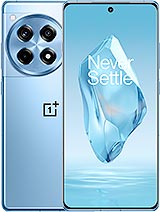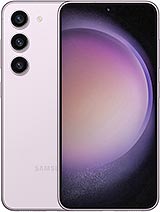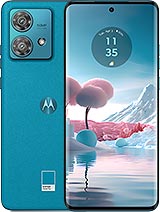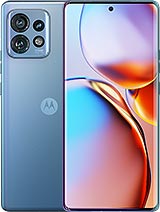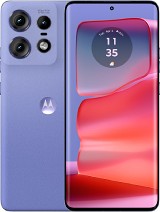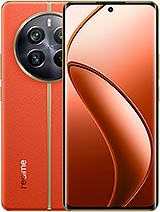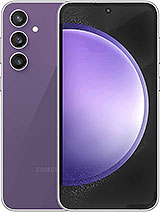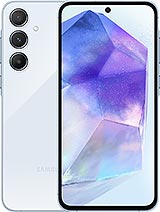Motorola Edge 50 Pro review

144Hz curved-edge OLED
The Edge 50 Pro is equipped with a 6.7-inch display that leaves little to be desired - at least for the class, that is. The OLED panel has a maximum refresh rate of 144Hz, so it's once again a notch above the 120Hz crowd, as we've come to expect from Motorola - it's not LTPO though, so it won't be quite as adaptive in its refresh rate switching. The resolution is also higher than 'regular' at 1,220x2,712px, making for a nicely crisp 446ppi pixel density.

The display features a combination of DC dimming and PWM at a reasonably high 720Hz and has a Flicker Prevention mode for those who are particularly sensitive to the phenomenon. It's a 10-bit panel with HDR10+ video support and a specified peak brightness of 2000nits.
In our brightness testing, the Edge 50 Pro was good for just under 1,300nits in adaptive mode when placed under bright light - a notable improvement over the previous generation models and one of the highest numbers in its class today. It's not quite as eager to let you crank up the nits manually, only allowing up to 516nits at the top end of the slider.
Motorola makes a big deal of how the Edge 50 Pro's display is both 'Pantone validated' and 'Pantone SkinTone validated', meaning it's been deemed accurate in its portrayal of colors and skin tones by the people who specialize in color accuracy. We're not quite sure how important that is, but it can't hurt, we reckon.
Refresh rate
The Edge 50 Pro offers several refresh rate modes with some adaptive behavior at play in all but the 60Hz one. The Auto mode will go as high as 120Hz and dial down to 60Hz when idling and so too will the 120Hz mode.
The 144Hz mode will enable the maximum supported refresh rate, but it too will switch to 60Hz when you don't touch the display.

Games are apparently capped at 60Hz in Auto when they're set to the 'follow system' setting. You can set a higher refresh rate on a per-game basis, or pick one of the higher global settings from the display settings menu before gaming - the Auto mode isn't gaming-friendly.
Streaming and HDR
The Edge 50 Pro doesn't have a Dolby Vision certification - the 40 Pro did, but this year's lineup is differently segmented, so that doesn't quite mean it's a downgrade. The phone is still HDR10 and HDR10+ video-compliant and you'd be getting HDR streams from YouTube. The implementation is such that the display will only go into HDR mode when you switch the video to fullscreen playback and not enable it for in-app previews or picture-in-picture mode.
Netflix doesn't allow HDR playback on the Edge 50 Pro, just like it didn't on the 40 Neo when we reviewed it. The Widevine L1 certification does enable FullHD playback, so at least there's that.
Motorola Edge 50 Pro battery life
Our new Active Use Score is an estimate of how long the battery will last if you use the device with a mix of all four test activities. You can adjust the calculation based on your usage pattern using the sliders below. You can read about our current battery life testing procedure here. For a comprehensive list of all tested devices so far, head this way.
The Edge 50 Pro is powered by a 4,500mAh battery - a sensible capacity given the rest of the hardware. In our Active Use test, we clocked 10:10h on the web browsing script and 15:27h of video playback. The gaming result was 7 hours flat, while the call time worked out to 33:28h.
These aren't bad numbers, but they aren't particularly impressive either, though it's quite important what you'd be comparing against. Depending on your region and where the local market price places the Edge 50 Pro, you could be looking at a Galaxy S23 or a Pixel 8, and the Edge 50 Pro has a bit of an advantage against those. Then again, a similarly priced OnePlus 12R will get you better longevity. In other contexts, however, where the Edge 50 Pro would be facing more frugal midrange rivals, the comparison won't be in its favor.
Charging speed
Our Motorola Edge 50 Pro arrived with a 125W TurboPower adapter, which is the unit that should be able to get you from a flat battery to 100% in 18 minutes according to the promo materials. That was indeed the case in our testing, making it easily the best result in the class and a major selling point of the handset in our book.

Mind you, the toggle for 'Charging boost' needs to be enabled to get you those numbers, and out-of-the-box that's set to off. Not that the 28 minutes required in that case is a bad result, but if you're of the 'faster is faster' disposition, make sure to find the toggle.
The good news doesn't end there either. The Edge 50 Pro supports wireless charging too and Motorola rates it at 50W with a proprietary charging stand. We don't have test results for that, but with the Pixel 8 being rated for 18W and the Galaxies maxing out at 15W, we can't imagine the Moto being beaten in that race. Not to mention the rest of its potential rivals that don't have wireless charging in the first place.
Speaker test
The Edge 50 Pro has a stereo speaker setup with a main unit on the bottom and another one on top that also doubles as an earpiece for voice calls. Each speaker only plays its own channel's track, and the phone assigns the channels dynamically depending on its orientation in space.



Bottom speaker • Top speaker / Earpiece • Dolby Atmos badge
In our speaker test, the Edge 50 Pro earned a 'Very Good' rating for loudness, a notch down from last year's Pro and on par with the 40 and 40 Neo, though names don't quite mean what they used to. The 50 Pro sounds notably better to our ears than any of the Edge 40s, bringing better low-end presence and more balanced response higher up the frequency range. It's also superior to the OnePlus 12R or the vivo V30, though the Pixel 8 and the Galaxy S23 do offer compelling alternatives for speaker sound quality.
Use the Playback controls to listen to the phone sample recordings (best use headphones). We measure the average loudness of the speakers in LUFS. A lower absolute value means a louder sound. A look at the frequency response chart will tell you how far off the ideal "0db" flat line is the reproduction of the bass, treble, and mid frequencies. You can add more phones to compare how they differ. The scores and ratings are not comparable with our older loudspeaker test. Learn more about how we test here.
Reader comments
- Anonymous
- 15 Jan 2025
- bAy
For those who want to use the dual app feature, it can be done with Motorola's Secure folder
- BB
- 06 Jan 2025
- pRA
I also use the OnePlus 11, and when I bought the Moto Edge 50 Ultra, I faced a similar issue. However, I’ve been using the 'Island' app from the Play Store for many years, and it works great for adding a second user and managing dual apps. ...
- Koshi
- 03 Jan 2025
- 7k3
Bought the device at end of December 2024. The display offered attracted me to buy the device. Now I find that a LED display doesn't even have 'Always on feature' frustrates me. Also, the dual app option which I used in Oneplus b...
